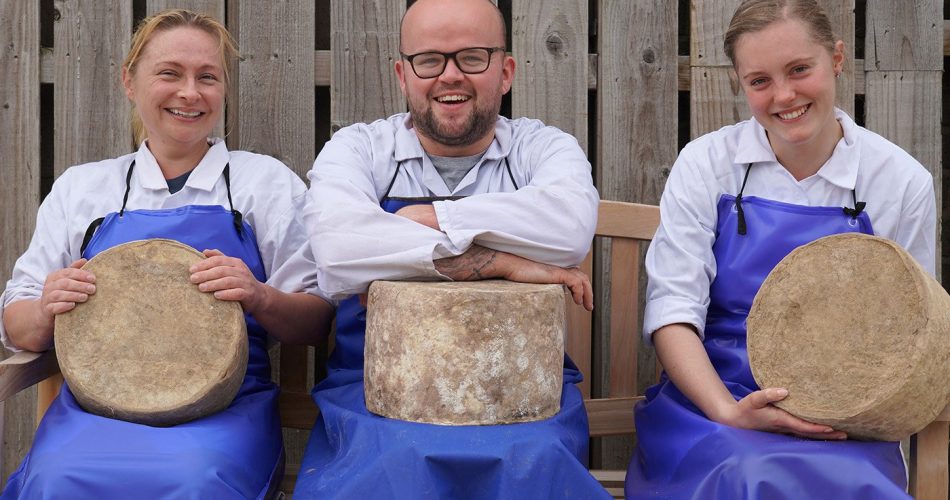Why Floridia Cheese Thomastown Is a Treasure in Melbourne Made Cheese
Why Floridia Cheese Thomastown Is a Treasure in Melbourne Made Cheese
Blog Article
Unlocking the Tricks of Artisanal Cheese Making: A Detailed Do It Yourself Guide
In the realm of culinary workmanship, artisanal cheese making stands as a testimony to the delicate equilibrium between tradition and advancement. Each action in the procedure, from selecting the right milk to developing aging methods, holds within it a riches of expertise gave through generations. As we begin on this trip to demystify the art of developing charming cheeses, we are confronted with a tapestry of abilities and tricks waiting to be unwinded. Join us as we explore the details of this old craft, where art, science, and patience assemble to create tastes that entice the senses.
Choosing the Right Milk
When beginning on the trip of artisanal cheese making, the selection of milk plays a vital function in determining the quality and qualities of the last product. The type of milk selected affects the flavor, appearance, and generally account of the cheese. Raw milk, directly from the animal, is favored by numerous artisanal cheesemakers due to its unique blend of enzymes, germs, and flavor substances. However, utilizing raw milk comes with dangers and laws, making sterilized milk a more secure alternative for newbies.
When picking milk for cheese production, it is necessary to take into consideration the fat material. Greater fat web content in milk can lead to a creamier and richer cheese, while reduced fat web content may bring about a drier and stronger appearance. Additionally, the resource of the milk, whether from cows, goats, sheep, or buffalo, contributes distinctive tastes and characteristics to celebrity (Floridia Cheese Melbourne). Each kind of milk brings its very own subtleties, permitting a variety of cheese ranges to be crafted based on the selected milk. Eventually, the option of milk is an essential choice that sets the foundation for an effective artisanal cheese-making endeavor.
Culturing and Coagulating
To initiate the cheese-making process, the important steps of culturing and coagulating need to be meticulously performed to transform milk right into curds and whey. Culturing involves introducing beneficial bacteria to the milk, which then begins the fermentation process. These microorganisms convert lactose (milk sugar) into lactic acid, developing the acidic environment necessary for coagulation. The sort of culture utilized can considerably influence the flavor, structure, and ripening of the final cheese product.

The timing and temperature control during culturing and coagulation are important factors that influence the last outcome of the cheese. Correct execution of these steps is necessary to make sure the desired texture, taste, and consistency of the artisanal cheese being generated.
Draining and Pushing Curds
After the milk proteins have actually coagulated and the curds have been cut to launch whey, the next crucial action in artisanal cheese making entails draining pipes and pressing the link curds to achieve the desired structure and uniformity of the final cheese item. Draining is the procedure of separating the curds from the whey. This can be done by transferring the curds into a cheesecloth-lined colander or mold and mildew and enabling the whey to drain pipes off normally. The time for draining can vary depending upon the type of cheese being made and the wanted moisture content.
Pushing helps remove any kind of staying whey and compacts the curds to develop a solid cheese wheel. Proper draining and pressing are important steps that dramatically affect the top quality and features of the artisanal cheese being generated.
Aging and Flavor Methods
Implementing meticulous aging and flavor strategies is critical in improving the deepness and intricacy of artisanal cheeses, raising their preference accounts to beautiful degrees of refinement and elegance. Aging plays an important duty in establishing the unique tastes and appearances that identify artisanal cheeses. Throughout the aging process, cheeses are stored in very carefully regulated environments where factors such as airflow, humidity, and temperature are controlled to encourage the development of useful molds and germs. This controlled environment allows the cheese to grow slowly, establishing complicated fragrances and rich tastes.
Seasoning strategies additionally contribute significantly to the last taste of artisanal cheeses. Cheesemakers might choose to present added tastes by incorporating active ingredients such as natural herbs, spices, and even fruits right into the cheese throughout the production procedure. Additionally, some cheeses are cleaned or massaged with numerous fluids, such as salt water or alcohol, to improve their flavors and appearances.
Wrapping and Storing Cheeses

Conclusion
In conclusion, grasping the art of artisanal cheese making involves thoroughly selecting the right milk, following precise culturing and coagulating procedures, draining pipes and pressing curds successfully, and using numerous aging and flavoring strategies. Remember to wrap and store your cheeses properly to make certain ideal flavor and texture advancement.
Each kind of milk brings its very own nuances, enabling for a wide array of cheese selections to be crafted based on the picked milk.After the milk proteins have actually coagulated and the curds have actually been reduced to launch whey, the following essential step in artisanal cheese making entails draining and pop over here pressing the curds to achieve the desired texture and consistency of the final cheese product. Most cheeses need to be wrapped in wax paper or cheese paper to enable them to breathe while securing them from drying out. For cheeses that need to proceed aging, such as bloomy peels or cleaned skins, guarantee they are saved in an amazing environment like a cheese cavern or a refrigerator established to the ideal temperature. By paying attention to the covering and storage space of artisanal cheeses, cheese makers and enthusiasts can preserve the stability of these delicacies and completely enjoy their complex tastes.
Report this page